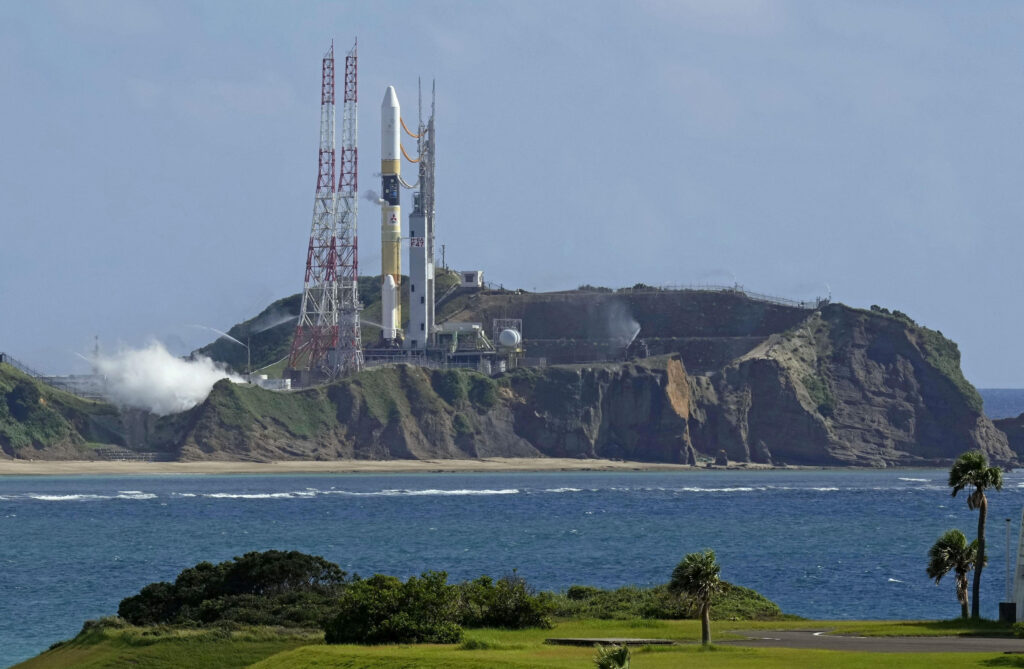By Kantaro Komiya and Rocky Swift
TOKYO (Reuters) – Japan’s space agency suspended a planned launch on Monday of a rocket carrying what would be the country’s first spacecraft to land on the moon, with operator Mitsubishi Heavy Industries (MHI) citing high winds.
Although the H-IIA rocket, the Japanese flagship launch vehicle, has a 98% launch success rate, unsuitable wind conditions in the upper atmosphere forced a suspension 27 minutes before the planned liftoff.
“High-altitude winds hit our constraint for a launch… which had been set to ensure no impact from debris falling outside of pre-warned areas,” said MHI H-IIA launch unit chief Tatsuru Tokunaga.
Strong winds of nearly 108 kph (67 mph) were observed at an altitude of 5,000-15,000 metres (16400-49200 ft), Japan Aerospace Exploration Agency (JAXA) safety manager Michio Kawakami said. Multiple typhoons around Japan could have affected the wind conditions, he added.
The new launch date has not been decided, but will be no sooner than Thursday because of necessary processes such as re-fuelling, Tokunaga said. MHI and JAXA have said a launch could take place as late as Sept. 15.
The rocket was to be launched from JAXA’s Tanegashima Space Center in southern Japan on Monday morning; it had already been postponed twice since last week because of bad weather. It will mark the 47th H-IIA Japan has launched.

‘MOON SNIPER’ MISSION
The rocket is carrying JAXA’s Smart Lander for Investigating Moon (SLIM), which would be the first Japanese spacecraft to land on the moon. Tokyo-based startup ispace’s Hakuto-R Mission 1 lander crashed on the lunar surface in April.
JAXA was planning to start SLIM’s landing from lunar orbit in January-February 2024 after Monday’s launch, aiming to follow the success of India’s Chandrayaan-3 moon exploration mission this month.
Dubbed the “moon sniper”, the SLIM mission seeks to achieve a high-precision landing within 100 metres of its target on the moon’s surface – a technological leap from conventional lunar-landing accuracy of several kilometres, according to JAXA.
The rocket is also carrying an X-Ray Imaging and Spectroscopy Mission (XRISM) satellite, a joint project of JAXA, NASA and the European Space Agency.
H-IIA, jointly developed by JAXA and MHI, has been Japan’s flagship space launch vehicle, with 45 successful launches in 46 tries since 2001. However, after JAXA’s new medium-lift H3 rocket failed on its debut in March, the agency postponed the launch of H-IIA No. 47 for several months to investigate the cause.
Despite its goal to send astronauts on the lunar surface in the late 2020s, Japan’s space missions have faced recent setbacks, with the launch failure of the Epsilon small rocket in October 2022, followed by an engine explosion during a test last month.



